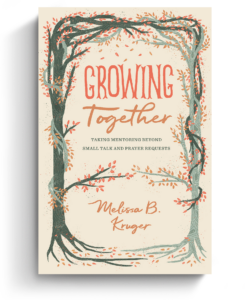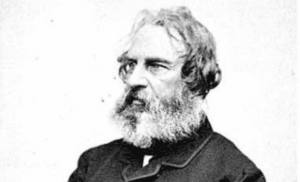Although I took some very fine classes taught by excellent professors as a part of my graduate studies at the University of Michigan, my greatest and most enduring learning came from the preparation work I did to take my exams.
Between our formal coursework and the writing of our dissertation, PhD candidates in English were expected to construct comprehensive reading lists in a specific period or genre that we’d work our way through and on which we’d be tested in written and oral form. The process of reading and annotating extensive selections from British Romantic poetry, Greco-Roman literature, and literary criticism in a condensed period of time opened my eyes to the pervasive themes and issues that connect, for example, the poetry of Blake, Wordsworth, Coleridge, Byron, Shelley, and Keats.
I went through a similar process in preparation for writing C. S. Lewis for Beginners, working my way carefully and systematically through all of Lewis’s major works. Rereading some 30 books in a span of about six months helped me to gain a more holistic vision of the great Christian apologist who wrote equally well in the genres of theology and philosophy, science fiction and fantasy, children’s literature and poetry, literary theory and aesthetic history, allegory and spiritual autobiography, fictional letters and devotional meditations.
Here are four insights I gained into the man and his work that justify his ever-increasing reputation among both Christian and non-Christian readers.
1. His vision of reality suffused everything he wrote.
Rather than be didactic and dogmatic about his strongly held Christian beliefs, Lewis allowed his works to be illuminated and empowered in a natural, organic way by the Christian worldview.
Lewis allowed his works to be illuminated and empowered in a natural, organic way by the Christian worldview.
Whether he swept his readers away to the magical land of Narnia; the planets Mars and Venus; the dark, superstitious world of the ancient Near East; the outer precincts of heaven and hell; or the stygian study of a letter-writing, advice-giving senior demon, Lewis maintained his vision of reality. This vision was of a transcendent yet immanent God who is himself the standard of good and evil, virtue and vice, beauty and ugliness—who would draw us out of darkness, error, and despair into light, truth, and hope.
2. He saw the beauty of the incarnation.
Of all the essential elements of the Christian worldview, the incarnation comes up the most often in Lewis’s work.
In Miracles, Lewis calls it the Great Miracle and argues the truth of it runs through all of nature. In Mere Christianity, it’s only because Christ (the Word) took on our flesh that we’re empowered to become like him. In The Problem of Pain, the process of becoming like the incarnate Christ often calls for suffering. In The Chronicles of Narnia, we love Aslan because he is what the second person of the Trinity (God the Son) would have been like had he been incarnated in a magical world with talking animals, living streams, and walking trees.
Lewis finds the incarnation writ large across the pages of the Old Testament (Reflections on the Psalms), mirrored in the poetic devices of allegory and symbol (The Allegory of Love), and anticipated in pagan rituals (Till We Have Faces). He even explains in his Space Trilogy that God’s decision to take on human form had cosmic repercussions.
3. He believed everything originated in God.
Just as Lewis’s theological belief that Jesus was fully God and fully man undergirds most of his works, so his philosophical belief that the cause (or origin) of something must precede and be greater than the effect unites his apologetics to his fiction and his fiction to his academic work.
In both Mere Christianity and The Abolition of Man, Lewis argues convincingly that morality isn’t man-made but instead demands a supernatural source. He argues the same for religion in The Problem of Pain, reason in Miracles, and spiritual desire in The Pilgrim’s Regress. In The Silver Chair, he incarnates these arguments by having an evil witch try to convince the heroes that there are no such things as suns and lions; they merely made those things up by looking at torches and cats and wondering what they’d look like if they were bigger.
In The Discarded Image and A Preface to Paradise Lost, Lewis explains that both Dante and Milton knew what we’ve forgotten: there’s hierarchy and order in the universe, we and the angels alike are created beings, Satan and his demons are spiritual beings who rebelled against their creaturely status, and evil is not a thing in itself but a perversion of good. As The Great Divorce makes clear, God and heaven are greater, not less, than us and our world.
4. He upheld divine sovereignty and human responsibility.
All of Lewis’s work affirms the reality of human and angelic free will and the temporal and eternal consequences of our choices and actions, without ever robbing God of his sovereignty or denying that salvation comes by grace through faith.
In both his allegorical and his spiritual autobiographies (The Pilgrim’s Regress and Surprised by Joy), Lewis confesses to the many false lures he followed as he sought the true source of his feelings of joy. In The Problem of Pain, A Preface to Paradise Lost, Perelandra, and A Grief Observed, he unpacks the connections between disobedience and pain and obedience and grace.
He confesses to the many false lures he followed as he sought the true source of his feelings of joy.
In all the Narnia books, Lewis’s child heroes aren’t fully forgiven and restored by Aslan until they come to a full knowledge of the nature of their sin and how they could have avoided it. In The Space Trilogy and Till We Have Faces, the protagonists learn the need for proper submission to authority as well as the need to act boldly when the occasion calls for it. In The Screwtape Letters and The Great Divorce, Lewis explores the psychology of sin, tracing the diabolical process by which we, through a series of small sins, slowly dehumanize ourselves.
November 22, 2023, will mark the 60th anniversary of Lewis’s death, but I’m convinced his reputation will only grow greater over the next 60 years. Indeed, given the current challenges faced by the evangelical church in America, we desperately need Lewis’s voice in the four areas in which he excelled:
1. We need to find a more subtle yet effective way to apply the Christian worldview to current social and political issues that may at first seem disconnected from a biblical understanding of reality.
2. We need to ground our defense of the biblical view of sex and gender in an incarnational understanding of humanity.
3. We need to remind ourselves and our society that goodness, truth, and beauty are not relative, man-made concepts but rather have their origin in God.
4. We need to approach issues of equity from a perspective that balances societal factors with our status as volitional beings whose choices have consequences.
May Lewis prove a courageous and winsome guide as we strive to reclaim the culture for Christ and the gospel.
Involved in Women’s Ministry? Add This to Your Discipleship Tool Kit.
 We need one another. Yet we don’t always know how to develop deep relationships to help us grow in the Christian life. Younger believers benefit from the guidance and wisdom of more mature saints as their faith deepens. But too often, potential mentors lack clarity and training on how to engage in discipling those they can influence.
We need one another. Yet we don’t always know how to develop deep relationships to help us grow in the Christian life. Younger believers benefit from the guidance and wisdom of more mature saints as their faith deepens. But too often, potential mentors lack clarity and training on how to engage in discipling those they can influence.
Whether you’re longing to find a spiritual mentor or hoping to serve as a guide for someone else, we have a FREE resource to encourage and equip you. In Growing Together: Taking Mentoring Beyond Small Talk and Prayer Requests, Melissa Kruger, TGC’s vice president of discipleship programming, offers encouraging lessons to guide conversations that promote spiritual growth in both the mentee and mentor.

































